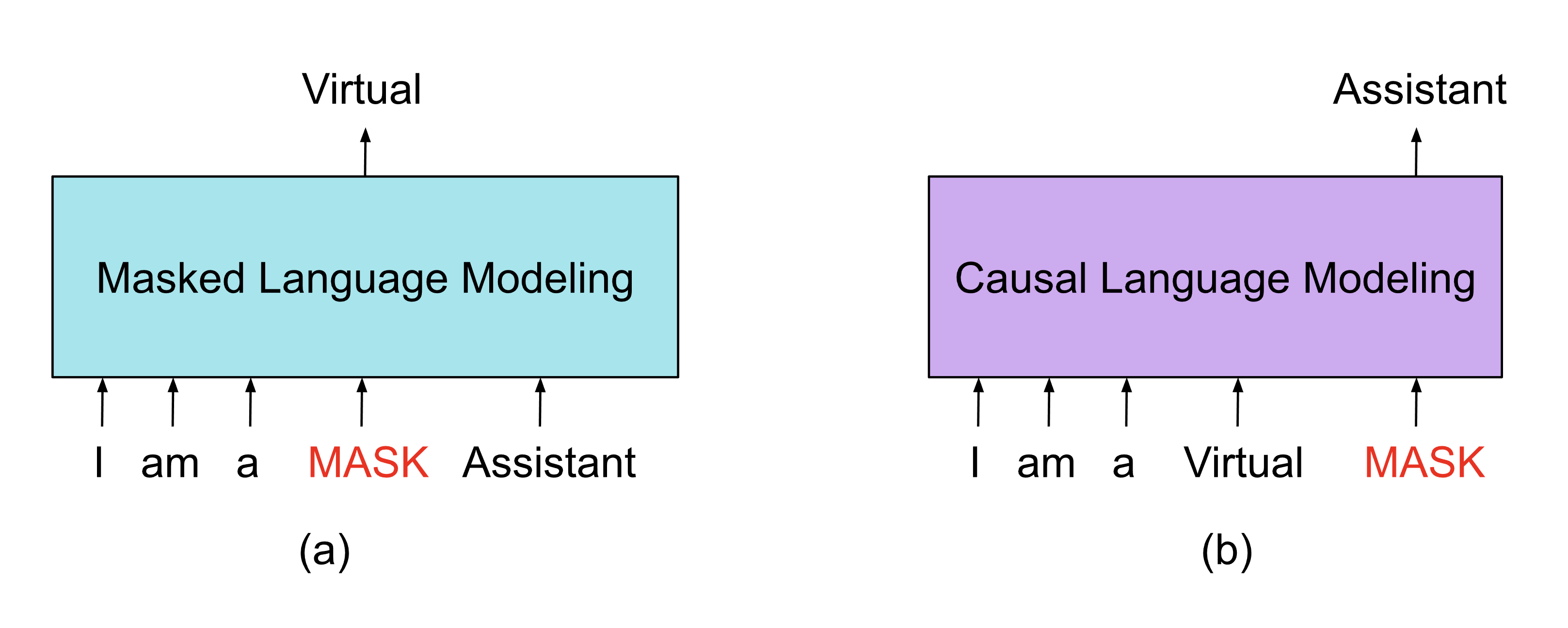Introduction
In this post, we will investigate the differences between Causal Language Modeling (CLM) and Masked Language Modeling (MLM)
What is Causal Language Modeling?
Causal Language Modeling (CLM) is a type of language modeling task where the model is trained to predict the next word in a sequence, given the previous words in the sequence; the model is trained to generate a sequence of words that makes sense in a given context.
CLM is a common pre-training objective used in transformer models, including the popular GPT (Generative Pre-training Transformer) models.
By training a transformer model to perform CLM, it can learn to generate high-quality natural language text, which can be fine-tuned for a wide range of downstream tasks, such as language translation, text classification, and question answering.
How is CLM different from MLM?
The key difference between CLM and MLM is in the way they process input data.
In CLM, the model processes a sequence of words from left to right, predicting each word based on the preceding words.
In contrast, MLM processes the entire input sequence at once, and the model is trained to predict masked words based on the surrounding context.

CLM is strictly “looking” from left to right, and predicting the text that comes directly after, whereas MLM “looks” both ways (before the generated and after). CLM is unidirectional, while MLM is bidirectional.
Both training techniques also serve different purposes.
CLM is useful for generating text, while MLM is useful for learning contextual representations of words that can be fine-tuned for a wide range of downstream tasks, such as language translation and sentiment analysis.
